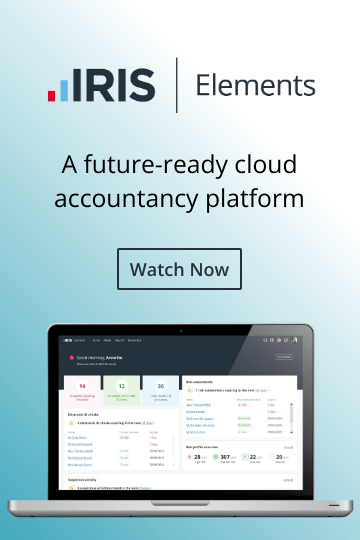BLOGS
MTD: Your 5 steps to success: Part 3
Making Tax Digital is the biggest immediate challenge facing accountants across the UK and, with many still trying to get to grips with it, we’re giving you a big helping hand. The team at IRIS have broken down the essential stages into our 5 step programme. In part 3 of our blog series to accompany this, we look at…
3. Selecting technology…
So, we’ve covered the importance of profiling your clients and your practice in parts 1 and 2. The next step? Selecting the right technology that fits your firm.
MTD compliance
When Making Tax Digital arrives in April the only way to submit VAT will be via MTD compliant software. It’s vital you are prepared and ready to go.
Of course, at this stage, we’d like to point you towards KashFlow, our powerful online bookkeeping and payroll solution for accountancy firms. As a user, you can already make and submit VAT returns and we have a new release in the pipeline with even more features to make it fully MTD compliant.
Bookkeeping solutions
Let’s look at what bookkeeping solution your clients currently use. It’s probably a relatively wide range, with KashFlow, Xero, Quickbooks, Excel and others and there will be some who don’t use any bookkeeping platforms, remaining solely paper-based.
But would it be beneficial to move all clients on to one standard platform? Could you adapt your business for the broadest range of clients? You need the right tech for that. That’s where IRIS Connector comes in.
Connecting the dots
Have you seen it before? Brought in as a new feature last year, IRIS Connector allows direct data imports from the major cloud bookkeeping products: KashFlow, Xero, FreeAgent and QuickBooks Online. It also has numerous other enhancements to make your working life easier. One clear and concise screen shows you exactly what will be imported and allows you to change the account code mappings ad-hoc.
VAT filings
Another key question to consider is who currently makes VAT filings? Are you expecting clients to do that or are you doing it on behalf of clients?
Your practice should consider if it wants to record VAT submissions and how it does that. We provide bridging software with our new VAT Filer solution that we launched at IRIS World in October.
Out with the paper receipts
Next, looking at the time you have to spend on clients who are very much paper-based, have you considered if there is a role for receipt capture software? There’s lots of time saving to benefit from this.
If you give IRIS Snap a go, you’ll be wondering how you ever worked without it before. This smartphone app solves that age old problem of clients swamping you with big bags of receipts. It gives you seamless processing into digital records by IRIS, ready for you to review. It will revolutionise the way clients keep records and help bring you another step towards making your practice fully digital and MTD compliant.
If you have KashFlow for accountants, you also get IRIS Insight. This gives you scenario planning, forecasting projections and can create P&L, balance sheet and cashflow forecasts in minutes. Accountants can provide more advisory services, including cashflow management, business health checks, finance director services, assistance in funding applications, and tax planning to name a few.
Some other considerations to ponder when thinking about technology to select:
• How will the workflow in the practice change?
• Are the clients aware of the changes?
• Is there a client communication strategy in place?
• Are clients easily able to share information with increased frequency?
We appreciate that we’ve given you a lot to think about and we know that making the right decisions on which tech suits your own practice can be a little daunting or overwhelming. We understand that each business is unique, requiring its own solutions.
That’s why it’s a great idea to speak to our team to help plot the appropriate route through MTD. E-mail them today at MTD@iris.co.uk. They will discuss your specific requirements and assess the best way forward, with a view to finding a package of solutions tailored for your individual practice’s needs.
Look out for the next part of the series – enabling the practice - coming soon.









